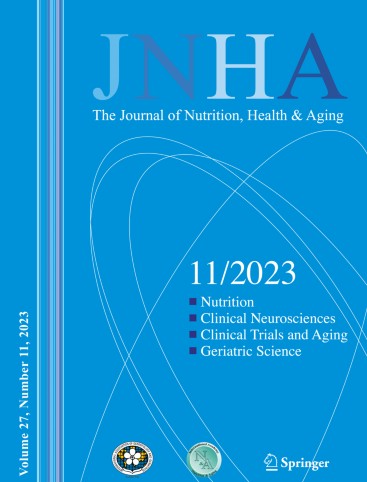中老年人日常活动能力障碍与抑郁之间的纵向关系:全国队列研究。
IF 4
3区 医学
Q1 GERIATRICS & GERONTOLOGY
引用次数: 0
摘要
背景:老年人日常生活能力(ADL)的下降是抑郁症状和疾病发生的显著预测因素。然而,ADL 残疾的变化对抑郁症进展的影响尚未得到广泛研究:本研究旨在探讨中国 45 岁及以上人群中当前 ADL 残疾与抑郁症之间的关系,以及 ADL 残疾如何影响晚年抑郁症的发展:本研究分析了中国健康与退休纵向研究(CHARLS)的 7 年数据,涉及 2205 名中老年人。ADL残疾(BADL:吃饭、穿衣;IADL:购物、做饭)采用ADL量表(0-12分,越低越好),抑郁采用流行病学研究中心抑郁量表(0-30分,越低越好)。在对相关控制变量进行调整后,对潜增长曲线和交叉滞后模型进行分析,以研究 ADL 残疾对抑郁进展的影响:抑郁、基本日常生活活动(BADL)和工具性日常生活活动(IADL)的平均值分别为 9.44 至 11.08、6.45 至 6.81 和 6.86 至 7.29。分析表明,抑郁与 ADL 之间存在潜在联系。具体来说,BADL 的变化轨迹可显著预测初始抑郁(β = 0.138,95%CI = 0.039-0.237)及其变化轨迹(β = 0.579,95%CI = 0.403-0.754)。虽然 IADL 对抑郁的轨迹没有明显的预测作用,但对初始抑郁有明显的预测作用(β = 0.471,95%CI = 0.404-0.538)。此外,交叉滞后回归分析进一步证实了抑郁与 BADL 残疾之间的关系:本研究强调了 ADL 残疾如何预测中国中老年人未来的抑郁症。研究结果表明,在这一群体中,ADL 残疾与抑郁症的变化和未来抑郁症的发生之间存在重要联系。因此,中国政府必须优先考虑提高老年人身体机能的干预措施,因为这些措施可以有效缓解抑郁症的恶化,促进积极的老龄化。本文章由计算机程序翻译,如有差异,请以英文原文为准。
Longitudinal association between ADL disability and depression in middle-aged and elderly: national cohort study
Background
The decline in daily living abilities (ADL) among older adults is a notable predictor of depressive symptoms and the occurrence of disease. However, the effects of changes in ADL disability on the progression of depression have not been extensively studied.
Objective
This research aims to examine the relationship between current ADL disability and depression in individuals aged 45 and older, as well as to explore how ADL disability influences the progression of depression in later life within China.
Methods
This study analyzed 7-year data from the China Health and Retirement Longitudinal Study (CHARLS), involving 2,205 middle-aged and older adults. The ADL disability (BADL: such as eating, dressing; IADL: such as shopping, cooking) were obtained using ADL scale (scores 0–12, lower is better), and depression was measured by the Center for Epidemiologic Studies Depression Scale (scores 0–30, lower is better). The latent growth curve and cross-lagged models were analyzed after adjusting relevant control variables to study the effect of ADL disability on the progression of depression.
Results
The mean values for depression, basic activities of daily living (BADL), and instrumental activities of daily living (IADL) varied from 9.44 to 11.08, 6.45 to 6.81, and 6.86 to 7.29, respectively. The analysis indicated a potential association between depression and ADL. Specifically, the trajectory of BADL was a significant predictor of both initial depression (β = 0.138, 95%CI = 0.039−0.237) and its trajectory (β = 0.579, 95%CI = 0.403−0.754). Although IADL did not significantly predict the trajectory of depression, it was a significant predictor of initial depression (β = 0.471, 95%CI = 0.404−0.538). Additionally, cross-lag regression analysis provided further support for the relationship between depression and BADL disability.
Conclusions
This research highlights how ADL disability can forecast future depression in Chinese middle-aged and older adults. The findings indicate a significant connection between ADL disability and both changes in and future instances of depression in this group. Therefore, it is crucial for the Chinese government to prioritize interventions that enhance physical functioning in the elderly, as such measures can effectively mitigate the worsening of depression and promote positive aging.
求助全文
通过发布文献求助,成功后即可免费获取论文全文。
去求助
来源期刊
CiteScore
7.80
自引率
3.40%
发文量
136
审稿时长
4-8 weeks
期刊介绍:
There is increasing scientific and clinical interest in the interactions of nutrition and health as part of the aging process. This interest is due to the important role that nutrition plays throughout the life span. This role affects the growth and development of the body during childhood, affects the risk of acute and chronic diseases, the maintenance of physiological processes and the biological process of aging. A major aim of "The Journal of Nutrition, Health & Aging" is to contribute to the improvement of knowledge regarding the relationships between nutrition and the aging process from birth to old age.

 求助内容:
求助内容: 应助结果提醒方式:
应助结果提醒方式:


